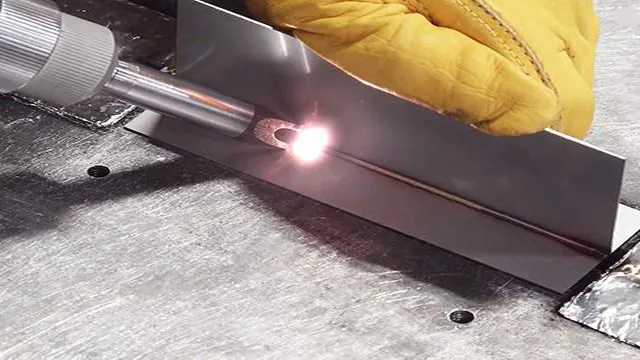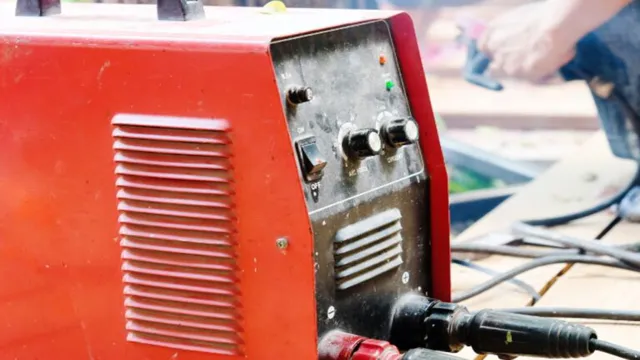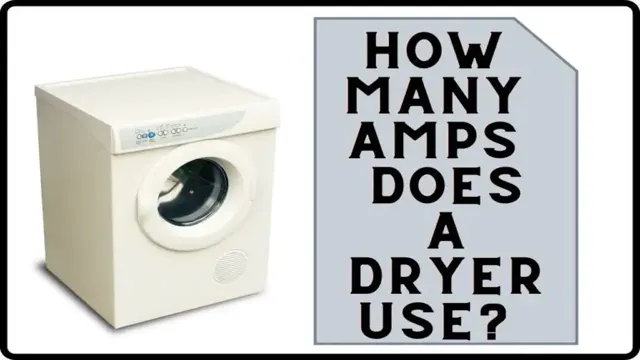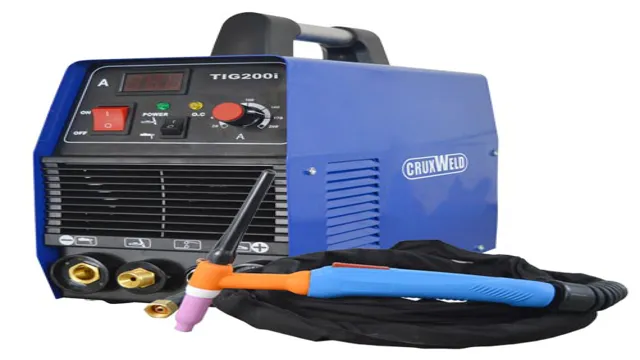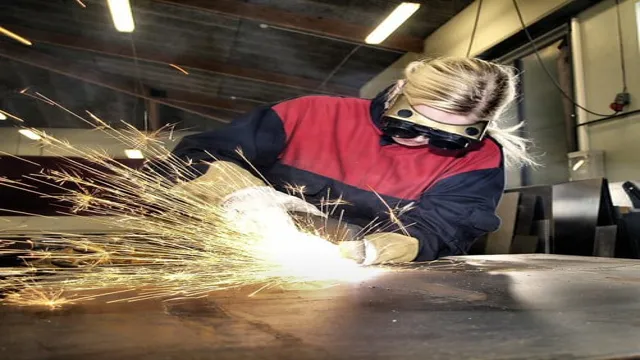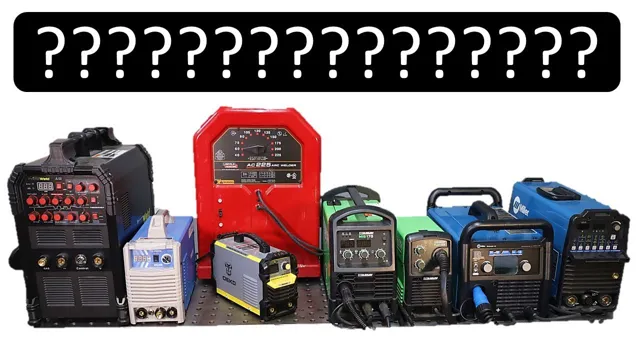How Does a Welding Helmet Work? A Comprehensive Guide to Understanding
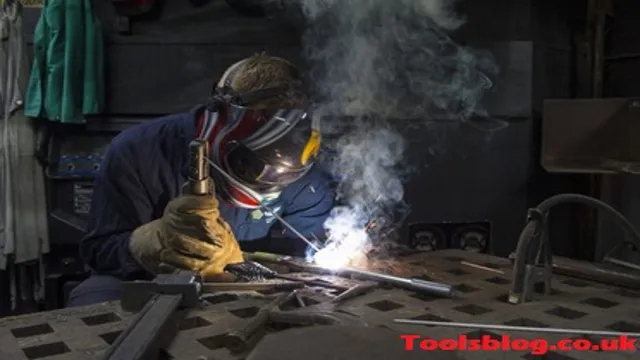
Welding helmets have come a long way since their inception, evolving from the basic metal visors of the past to advanced helmets with auto-darkening lenses and sound and light sensors. But how do these welding helmets actually work? What makes them so effective in protecting welders from the bright and dangerous sparks and UV rays that are a part of welding? In this blog, we’ll explore the inner workings of welding helmets, including how they detect and respond to light, the different types of lenses and filters used, and the various features available in modern welding helmets. Whether you’re a seasoned welder or simply curious about the technology behind welding helmets, this blog will provide valuable insights and information.
So, let’s dive in and uncover the mystery of how welding helmets work!
What is a Welding Helmet?
Welding helmets are an essential piece of safety equipment for anyone working in welding. When you’re welding, a welding helmet will protect your eyes, face, and neck from burns and harmful radiation that could damage your skin and eyesight. The helmet is equipped with a special auto-darkening filter that sits between your eyes and the welding arc.
This filter detects the brightness of the arc and adjusts the lens accordingly. When the arc is inactive, the filter has a clear view like a pair of sunglasses. However, when the arc is active, the filter quickly darkens to protect your eyes from harmful radiation.
This advanced technology is very important as it protects not only your eyes but also your skin from the intense heat of the welder. Without a welding helmet, you would risk significant injury, burns to your face, and irreversible damage to your eyesight. In summary, welder helmets are essential protective equipment that saves you from harmful radiation when working in a welding field.
Definition and Uses
A welding helmet is a crucial piece of safety equipment used to protect the welder’s face, eyes, and neck from the harmful effects of the welding arc. It is an essential tool that ensures the safety of the welder from various hazards such as intense light, flying debris, and harmful fumes that may cause injury or illness. Welding helmets come in various designs and are made from different materials such as plastic, fiberglass, and carbon fiber, each with its unique features and benefits.
They are available in both manual and automatic models, with the latter being the more popular option due to their convenience and ease of use. The automatic helmet features a special lens that automatically adjusts to the brightness of the welding arc, providing the welder with optimal vision while reducing the risk of eye damage. In conclusion, welding helmets are essential safety gear that every welder should use to ensure their safety and well-being.
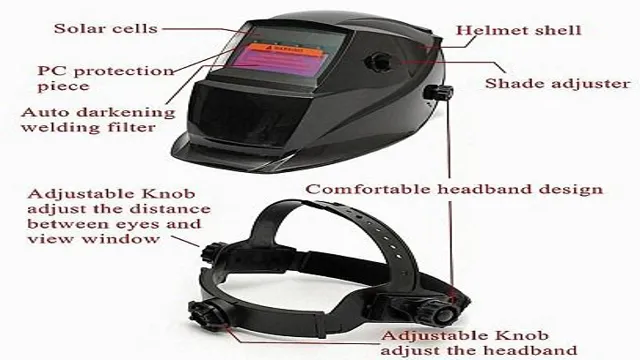
Features of a Welding Helmet
When it comes to welding, safety is a top priority, which is why welding helmets are crucial. So, how does a welding helmet work? Well, welding helmets work by protecting the welder’s eyes, face, and neck from dangerous UV rays and intense brightness produced during the welding process. Welding helmets typically consist of a durable shell, a comfortable headgear, viewports, and a filter lens.
The filter lens is the most important part of the welding helmet, as it provides the proper shade to protect the welder’s eyes from harmful rays. The shade level of the filter lens can be adjusted manually or automatically, depending on the type of welding helmet. Additionally, welding helmets may also feature adjustable sensitivity settings that detect the intensity of the welding arc and darken the shade accordingly.
Some welding helmets also come with added features like air purifiers, respirators, and Bluetooth technology. In summary, welding helmets work by providing a protective shield to the welder’s head, neck, and eyes from the hazardous elements of welding.
Auto-Darkening Technology
Auto-Darkening Technology One of the essential features of a welding helmet is auto-darkening technology. It’s a game-changer in the world of welding, as it ensures safety and convenience for the welder. With this technology, the helmet’s lens automatically darkens when the welder starts welding, protecting their eyes from the dangerous UV and IR rays emitted during the process.
The helmet’s lens also quickly clears up once the welding stops, allowing the welder to see their work clearly. Auto-darkening helmets have replaced the traditional helmets, reducing the number of accidents and injuries in the welding industry. Investing in a good quality auto-darkening welding helmet is crucial for anyone who frequently practices welding.
It not only provides safety but also increases productivity, making welding procedures more accessible and efficient.
Adjustable Shade
One of the key features that make a good welding helmet is adjustable shade. Welding can be an incredibly bright and intense process, and without proper protection, it can be harmful to the eyes and skin. A helmet with adjustable shade lets the user customize the level of protection they need for a specific welding project, ensuring adequate protection without sacrificing visibility.
Some helmets even offer auto-darkening features that adjust the shade automatically, making the welding process even easier and more efficient. By providing flexibility in shade options, an adjustable welding helmet helps users stay safe and comfortable as they work. Ultimately, this feature can make all the difference in the quality of work and the overall experience for the welder.
UV Protection
When it comes to choosing a welding helmet, there are several features that you should consider. One of the most important features is UV protection. Ultraviolet radiation is a serious hazard in welding, and prolonged exposure to UV light can cause serious damage to the eyes and skin.
A good welding helmet should provide complete protection against UV radiation, with a shade level of at least 1 The helmet should also have a high-quality lens that filters out harmful UV rays without affecting visibility. Additionally, the lens should be made of durable materials that can withstand the heat and debris produced during welding.
By choosing a welding helmet with proper UV protection, you can ensure that you stay safe and protected while working on welding projects.
How Do Welding Helmets Protect Your Eyes?
Welding helmets are crucial for anyone who engages in welding activities to protect their eyes. These helmets have advanced technology that works to block out harmful rays from the welding process. The helmets typically feature a tinted glass visor, which is made to absorb intense light and harmful UV rays that might cause severe eye damage.
The dark tint of the visor is usually adjustable, so the welder can get the level of darkness that matches the job at hand. The welding helmet also has a protective flap that covers the welder’s neck, shielding it from the sparks that fly off during the welding process. In essence, a welding helmet works by filtering out harmful light and debris, ensuring that the welder’s eyes and face are fully protected from harm.
Darkening the Lens
Welding helmets are designed to protect the eyes and face from the intense bright light of welding. The helmets feature a special lens that darkens automatically when the welding arc is struck. This is due to the lens material being photosensitive, or light reactive.
It allows the lenses to quickly adjust and filter out harmful ultraviolet and infrared light. This keeps the eyes safe from damaging exposure and reduces the risk of welder’s flash or arc eye, which is a painful condition that can occur when the eyes are exposed to bright welding light. The darkened lens also allows the welder to see the welding work clearly, without any glare or harsh reflections.
Additionally, the helmets also defend against sparks, slag, and other debris generated during the welding process, thus providing essential safety and protection.
Filtering Harmful Light
Welding helmets are designed to protect your eyes from harmful light generated by welding arcs. The lenses of welding helmets are made of a special material that filters out ultraviolet (UV) and infrared (IR) radiation emitted by the arc. UV radiation can cause cataracts and damage to the cornea, while IR radiation can cause burns to the eyes.
Welding helmets also protect the eyes from sparks, debris, and other flying objects that may occur during welding. The helmets are available in different shades, with darker shades used for more intense welding, and lighter shades used for less intense welding. In addition, helmets usually come with adjustable suspension systems to ensure a comfortable fit, and a backhead protector to protect the back of the neck.
The helmets also have a ventilation system for air circulation and cooling. By wearing a welding helmet, you can ensure the safety of your eyes and protect them from serious damage caused by constant exposure to welding arcs.
Protecting Against Sparks and Debris
Welding helmets are designed to provide the necessary eye protection from sparks and debris generated during welding processes. In particular, these helmets are built with filters that will block harmful ultraviolet and infrared light from the welding arc. These filters will allow welders to look directly at the welding arc and perform their job safely without causing long-term eye damage.
Welding helmets come with an auto-darkening feature that ensures constant eye protection, regardless of the welding environment, and the level of light present. The auto-darkening feature works by detecting the intensity of light and changing the shade of the lens accordingly. The greater the brightness, the darker the helmet will become, improving visibility for the welder.
Modern helmets come with a range of features like adjustable headgear, ventilation, and lightweight material making them more comfortable to wear, even for an extended period. In conclusion, wearing helmets during welding procedures is a crucial part of ensuring worker safety.
Choosing the Right Welding Helmet
If you’re new to welding or looking for a new welding helmet, you may be wondering how does a welding helmet work? A welding helmet is designed to protect your face and eyes from the intense light and heat produced during welding. It works by using a darkened lens to block out the harmful ultraviolet and infrared light, while still allowing the welder to see their workpiece. When the welding arc is struck, the lens automatically darkens to protect the welder’s eyes.
The lens can be adjusted to different shades depending on the type of welding being done and the brightness of the arc. Some welding helmets also come equipped with additional features such as auto-darkening lenses, adjustable headgear, and respiratory protection. It’s important to choose a welding helmet that is comfortable, fits properly, and meets the safety requirements for the type of welding you’ll be doing to ensure your safety while on the job.
Considerations
When it comes to selecting the right welding helmet, there are several factors to consider to ensure that you have the best protection while welding. One important consideration is the type of welding you’ll be doing. Some helmets are designed for specific types of welding, such as TIG or MIG, while others are more versatile.
Another factor to consider is the helmet’s lens and auto-darkening feature. A high-quality lens with a quick response time can make a big difference in your safety and comfort while welding. Additionally, the helmet’s fit and comfort level are essential.
Make sure you choose a helmet that fits securely and comfortably, as you’ll be wearing it for long periods. Also, look for a lightweight helmet that won’t put too much strain on your neck and head. By taking these factors into account, you can select the right welding helmet that fits your needs and budget.
Examples of Top-Rated Helmets
Choosing the right welding helmet is essential for any welder, whether you’re a beginner or an experienced professional. Top-rated helmets offer the best protection against arc flashes, welding sparks, and harmful UV rays that can damage your eyes. One of the best helmets available is the Lincoln Electric Viking 3350 welding helmet.
This helmet is highly rated for its auto-darkening lens, which quickly adjusts to changing light conditions, providing clear visibility. It also has a large viewing area, making it easy to see your work. Another excellent helmet is the ESAB Sentinel A50.
This helmet offers a high-tech design with a crystal-clear lens, allowing for optimal visibility and a comfortable fit. It also has an easily adjustable headgear, making it comfortable to wear for prolonged periods. So, if you’re looking for a top-rated welding helmet, these two options are certainly worth considering.
Remember to look for helmets that are comfortable to wear, have a large field of view, and provide the right level of protection for your needs.
Conclusion
In the world of welding, your vision is key to your success. But without proper protection, even the most skilled welder can suffer from flash burns and permanent eye damage. This is where the welding helmet comes in – a world-class piece of protective gear that not only shields your eyes from bright welding arcs but also provides you with a clear view of your work.
By using a combination of high-tech filters and lenses, welding helmets can automatically adjust to match your working conditions and protect your eyes from harmful infrared and ultraviolet radiation. So if you’re looking to make a name for yourself in the world of welding, start by investing in a reliable and effective welding helmet – your eyes will thank you for it!”
FAQs
What is a welding helmet?
A welding helmet is a type of protective headgear worn during welding to protect the eyes, face, and neck from harmful radiation, burns, and debris.
How does a welding helmet protect the wearer?
A welding helmet protects the wearer by using a filter lens that blocks harmful radiation emitted during welding. It also covers the face and neck to prevent burns and injury from debris.
What is an auto-darkening welding helmet?
An auto-darkening welding helmet is a type of welding helmet that automatically adjusts the shade of the lens to protect the wearer’s eyes from the bright light of the welding arc.
How does the auto-darkening feature of a welding helmet work?
The auto-darkening feature of a welding helmet works by using sensors that detect the light emitted by the welding arc. The sensors then send a signal to the lens to darken the shade accordingly, protecting the wearer’s eyes.
What types of lenses are available for welding helmets?
The most common types of lenses for welding helmets are fixed shade, variable shade, and auto-darkening. Fixed shade lenses have a single shade that does not change, while variable and auto-darkening lenses can adjust the shade based on the brightness of the welding arc.
How do you choose the right welding helmet for your needs?
To choose the right welding helmet for your needs, consider the type of welding you will be doing, the level of protection required, and your budget. Look for helmets with a suitable shade range, comfortable headgear, and reliable sensors.
How often should you replace your welding helmet?
Welding helmets should be replaced when they become damaged, cracked, or visually impaired. It is also recommended to replace them every few years to ensure that the lens and headgear are functioning properly.

